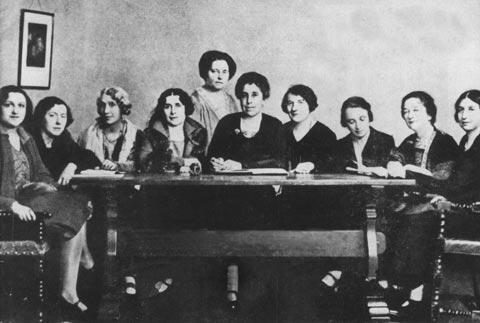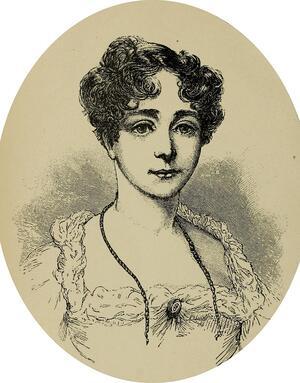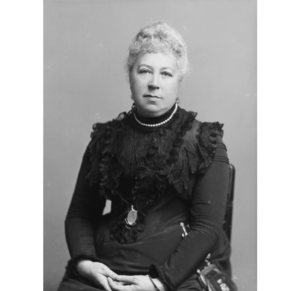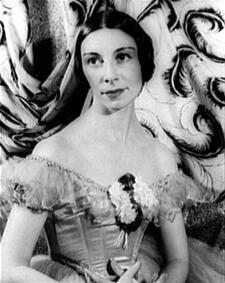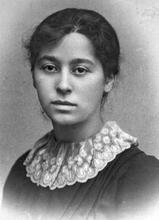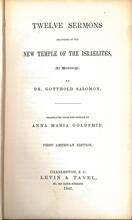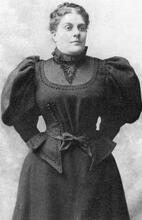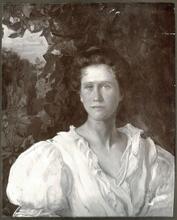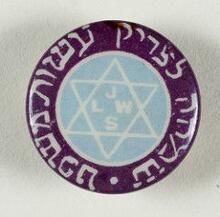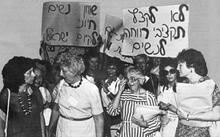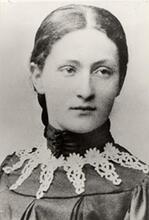Britain: Nineteenth and Twentieth Centuries
Since being allowed to resettle in 1656, Jews in Great Britain have established deep community ties throughout their diverse community. Class differences between early Sephardic settlers and the later wave of Ashkenazi immigrants gave rise to numerous Jewish charitable organizations, of which women played a key role. In the late nineteenth century, an influx of immigrants provided an outlet for female volunteerism among the middle class, with female philanthropists creating Jewish organizations to help mothers and offer religious study for girls. The Union of Jewish Women was founded in 1902, and British women played central roles in the international Zionist movement with the creation of the Federation of Women Zionists. By the end of the twentieth century, British Jewish women participated in virtually every form of cultural and political activity.
Historical Background
From 1656, when Jews were allowed to resettle in Great Britain, forming a small community in London until the present, the Anglo-Jewish community has benefited from the relative tolerance toward minorities that the British have displayed, as well as from general economic and political developments. To be sure, Parliament did not fully emancipate Jews until 1858 and social discrimination persisted into the twentieth century. Great Britain did, however, offer haven to successive waves of immigrants, and Jews have prospered on its shores, becoming British and participating in the larger culture of the urban middle classes. The status of Jewish women was affected both by larger social mores and by the nature of the Anglo-Jewish community.
Although the initial settlers were Descendants of the Jews who lived in Spain and Portugal before the explusion of 1492; primarily Jews of N. Africa, Italy, the Middle East and the Balkans.Sephardim, thousands of Jews of European origin and their descendants, including most of North and South American Jewry.Ashkenazim from the Netherlands, the German lands, and Poland soon surpassed them in number, founding their own synagogue in 1690 and becoming the majority by 1720. In addition to London, where at least half of British Jews have lived in the modern period, there were small Jewish settlements in such provincial cities as Manchester and Leeds. Most of the immigrants of both communities were poor, although a wealthy elite emerged among the Sephardim. However, the majority of Jews struggled economically. Jewish communal leaders quickly developed social welfare programs, including, in 1731, a Sephardi-sponsored school for the daughters of the poor of their congregation. Jewish women worked in shops and market stalls, alone or with their husbands. Jews of both Sephardi and Ashkenazi origin acculturated and moved into the middle classes, with many Sephardim entering the upper classes. When they became middle class, largely in the nineteenth century, they adopted prevalent bourgeois values and women generally, but not always, withdrew from the marketplace. Like other middle-class women, they devoted themselves to managing their households and the family’s social calendar and raising their children, often serving as their informal spiritual educators.
On the eve of the French Revolution, the legal status of English Jewry was the most favorable in Europe. Jews did not enjoy full equality, but they shared their unequal status with other non-Anglicans. By the early nineteenth century, fears generated by the French Revolution had subsided and Catholic emancipation (1829) led to a campaign to end Jewish disabilities. The only remaining religious minority facing legal discrimination, Jews sought equal opportunity. The leaders of the campaign opposed the willingness of many Jews to accept legal inequality as long as they enjoyed social equality. The lack of the franchise tended to reinforce doubts about Jews’ moral character and “racial” distinctiveness. Promoters of Jewish emancipation, typically the wealthier and more acculturated, generated rifts in the Jewish community because they challenged a longstanding tradition of inconspicuous negotiation with those in power.
The nineteenth century saw the rise of many communal institutions, largely led by men. These included the Jewish Board of Deputies (JBD), the official channel of communication with the Government in affairs that concerned Jews (1760); the Jewish Chronicle (1841); Jews’ College (1855); the Jewish Board of Guardians (JBG), the umbrella charitable organization (1859); United Synagogue (1870); and the Federation of Synagogues, established by Orthodox immigrants (1887). Although Jews had prospered throughout the nineteenth century, new Jewish immigrants from Eastern Europe, some 120,000 to 150,000 of whom settled in Great Britain, and especially in London’s East End, from 1881 to 1914, swelled the ranks of the poor. Native Jews wanted to be certain that co-religionists did not become a public burden and established numerous charitable institutions. Relief services sponsored by established native Jews created opportunities for women. In 1884, for example, the Jewish Board of Guardians created the Ladies’ Conjoint Visiting Committee; the women provided advice and financial assistance to poor Jews. Like many other middle- and upper-class women who accepted the notion of “domestic feminism” that expanded women’s roles into the larger society, they accepted responsibility for improving the situation of less fortunate Jewish women and for helping them meet the expectations of the larger society.
Moderate religious reform, much less extreme than on the Continent, began in the mid-nineteenth century. Though small, the Reform Movement attracted upper and upper-middle class Jews. Reform synagogues attracted more women than men. Even the traditional synagogues of the United Synagogue began drawing larger numbers of Jewish women, who followed the pattern of their Christian neighbors, whose church worshipers were predominantly female. Although family and friends discouraged her, Judith Cohen Montefiore liked to attend synagogue and, owing to her social status, set a precedent for other Jewish women. Montefiore, the devoted wife of the prominent leader and philanthropist Moses, was the author of A Jewish Manual (1846), an etiquette manual for Anglo-Jewish women.
Jewish women played a visible role in nineteenth-century British literature both as subjects and authors. Representations of “Jewesses” by authors such as Walter Scott and George Eliot were primarily sympathetic, though others like Trollope saw the Jewish woman as exotic and seductive. Jewish women such as Emma Lyon Henry (1788–1870), Felicia Hemans (1793–1835), Anna Maria Goldsmid, and Nina Salaman published poetry. The sisters Marion Moss Hartog and Celia Moss (1819–1873) published children’s literature, as well as sketches of Jewish history. Grace Aguilar gained fame for her positive portrayals of Judaism and Jewish culture. But there were several Jewish women writers, including Amy Levy, a brilliant poet and novelist, and Julie Frankau (1859–1916), who were caustic critics of Anglo-Jewish life.
British Jewry underwent significant changes between 1880 and the eve of World War II. Large-scale emigration from Russia followed the 1881 assassination of Alexander II. England’s Jewish population increased from about 60,000 to approximately 350,000. Many Jews chose England because of its tradition of asylum, its native Jewish community, the lower cost of travel to America from England than from Germany, and the demand for immigrant labor. Jewish immigrants included a significant percentage of women and skilled workers.
In order to establish themselves in a trade and to earn passage for relatives, many men emigrated ahead of other family members. Women also regularly moved to England on their own. Travel was precarious for all immigrants, particularly women. Dishonest agents harassed and overcharged immigrants and failed to produce promised marriage partners. Upon arrival, some women found themselves deserted by husbands; a small minority ended up as prostitutes, many tricked and some undoubtedly aware of the financial potential.
Between 1871 and 1911 the proportion of Jewish women migrating increased; their percentage of the immigrant Jewish population was higher than among any other immigrant group. Higher marriage rates also characterized Jewish immigrants. These factors, combined with Judaism’s emphasis on family, influenced not only the nature of family life, but educational, occupational, and recreational aspirations as well. It may be that Jewish women, though perhaps more dependent, had greater economic security than women of other backgrounds.
Through early intervention in the educational and recreational lives of children, middle-class Jews attempted to mold foreigners into respectable Britons. Both by “training” mothers and through their children, Anglo-Jewry encouraged a diversification of occupations, wider geographic distribution, and a pattern of recreation and patriotic action that more closely resembled the culture at large. Immigrants accepted many of these attempts with limited resistance, but did reject some efforts to modernize religious practice, education, and child-rearing, preferring to adapt in ways not intended by those committed to anglicization.
Arrival of immigrants marked the return of women to the workplace. The middle-class vision of married women’s withdrawal from paid employment was an unattainable ideal for immigrants, and women, single and married, sought employment in garment, cap, cigar- and cigarette-making factories, assisted husbands in home workshops, or kept shops. Sweatshops were filthy, factory regulations unenforced, and much of the work seasonal. Many women combined employment and care of their children by working out of their homes. Jewish women’s wages, typically half of men’s, depended in large part on an industrialized urban environment. Many Eastern European Jews were already familiar with such types of labor. England’s urban environment, while unhealthy for all, seems to have caused even greater hardships for other, more rural, immigrant groups. Despite middle-class promotion of domestic service as an effective form of socialization and exposure to middle-class habits, response was limited. The census recorded only nine percent of Jewish women working as domestics, atypical of most immigrant women.
In assessing the experience of Jewish women and children in the East End, several distinguishing features emerge. On average, and despite the poverty, Jews probably had a higher standard of living and endured less domestic violence, suggesting that Jewish women negotiated the pitfalls of poverty with greater success than others in the working class. Jewish children lived in more stable homes, received better care, and were healthier—probably the result of differences in the allocation of family income and the impact of Jewish tradition and charitable networks.
A sense of ethnic and religious responsibility directly linked the Jewish poor with their wealthier co-religionists. The emphasis on charity and education, dietary laws, the honored position of wives and mothers, and the limited resort to alcohol, affected expectations and behavior. In her studies of Jewish motherhood in East London between 1870 and 1939, Lara Marks highlights the connections between health and ethnicity. Contemporaries suggested that exemplary Jewish motherhood led to the unusually low Jewish infant mortality rates. This remarkable record, concludes Marks, resulted from a combination of Jewish customs related to The Jewish dietary laws delineating the permissible types of food and methods of their preparation.kashrut, hygiene, rituals such as the Ritual bathmikveh and hand washing, as well as breast-feeding, relatively low rates of illegitimacy, and extensive Jewish philanthropy. Fewer cases of rickets among children, for example, suggests that the diet in Jewish homes was better than in the surrounding area.
Tensions did arise between established Jews and new arrivals. The former promoted notions of respectability, self-reliance, and deference—familiar themes in Victorian charitable and social discourse. While providing an impressive level of assistance and charity (Lit. "righteousness" or "justice." Charityzedakah), prior to World War I, the host community rarely encouraged immigrants to aspire to a status above the higher levels of the working class—perhaps indicative of the host community’s conception of realistic or acceptable expectations. Immigrant mothers found themselves in numerous and often conflicting roles. Many functioned as the link to Eastern European religious and cultural life, values that their children’s educational institutions tended to disdain. The established Jewish community promoted Anglicization among immigrant women—via their children and communal services.
Education
Girls’ formal education had been generally neglected in the eighteenth and nineteenth century. Middle-class parents were generally not as committed to separate Jewish schools for their children, fearing they encouraged a sense of exclusiveness, and were even less concerned with education for girls. Few, however, objected to separate schools for the poor. Some “respectable” poor girls attended the Ashkenazi-founded trade school of the Jews’ Hospital, established in 1807. Girls studied moral values their teachers thought appropriate, along with domestic skills such as knitting, washing, ironing, and cooking that prepared them to become in their early adolescence domestic servants in Jewish homes. The Jews’ Free School, founded in 1817, also provided poor girls, along with boys, with an elementary general and religious education. In 1846, a girls’ school connected to Westminster Jews’ Free School opened. Philanthropic support increased because of fear of missionary influences on children. Two important communal organizations, the Jewish Association for the Diffusion of Religious Knowledge (JADRK), founded in 1860, and its successor, the Jewish Religious Education Board (JREB, 1894), offered rudimentary Jewish education and catered overwhelmingly to girls, who made up sixty to eighty percent of the students. JADRK encouraged The Jewish dietary laws delineating the permissible types of food and methods of their preparation.kashrut and plentiful use of water, and alerted mothers to the moral dangers to their daughters if they visited places of amusement.
Middle-class and wealthier families educated girls at home or in private schools, some run by Jews, where they acquired as much education as their parents felt necessary for them. British Jews, who focused on business as the road to economic mobility, did not boast many intellectuals.
Among immigrant Jews from Eastern Europe, boys typically received more intensive Jewish education in privately sponsored Lit. "study of Torah," but also the name for organizations that established religious schools, and later the specific school systems themselves, including the network of afternoon Hebrew schools in early 20th c. U.S.Talmud Torahs. Given the nature of Jewish tradition, parents made it a priority to pay to educate sons, but not daughters. Girls’ religious education was much less comprehensive than that of boys and generally introduced the East End’s Jewish girls to anglicized Judaism. However, according to Julia Cohen of the Union of Jewish Women (UJW), “working class girls” were no longer left in the appalling state of ignorance and drudgery, amounting almost to slavery, described by Harriet Martineau. Some immigrants, including women, benefited from adult education classes sponsored by the Russo-Jewish Committee. Jewish students could also attend the Tower Hamlets Evening Schools, where drama and literature classes were particularly popular with girls.
Jewish women, among them Lady Louisa Goldsmid and Fanny Hertz, participated in the campaign to open higher education to women. Goldsmid helped found Girton College (1869) and her involvement meant that Jewish women gained admission to Cambridge University alongside Christian women.
Female Voluntarism
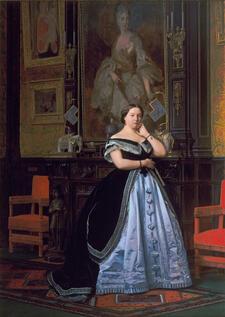
Portrait of British philanthropist Charlotte Rothschild by Jean-Léon Gérôme, 1866. Via Wikimedia Commons.
By the turn of the twentieth century, when the Jewish community absorbed large numbers of impoverished co-religionists, women pioneered many new communal services. Debates over scientific charity and expanding roles for women generated extensive discussion about philanthropy. Many Jewish women’s organizations that emerged in Britain towards the end of the nineteenth century incorporated maternalist goals and built on acceptable arenas of female activity to expand opportunities for women in communal affairs. Their most prominent leaders were the wives and daughters of the elite Anglo-Jewish families such as the Rothschilds. Rarely did these Jewish organizations explicitly describe themselves as feminist, yet they sought to improve women’s status and increase their opportunities, even if they left unchallenged basic assumptions about women’s and men’s “natural” roles. These women’s organizations joined communal institutions aimed at immigrant women clients. Beginning in 1896, for example, the community established Jewish Mothers’ Meetings. During meetings, mothers learned to sew and received instruction on the care and feeding of infants. Such programs were an important example of the types of interaction young immigrant women had with middle-class native Jews and their values.
A number of female activists focused on women’s religious inequality. Lizzie Hands, for example, founded the Council for the Amelioration of the Legal Position of the Jewess to press for the equalization of women’s status and to improve the lot of Woman who cannot remarry, either because her husband cannot or will not give her a divorce (get) or because, in his absence, it is unknown whether he is still alive.agunot. During the 1920s and 1930s she authored papers on the legal difficulties besetting Jewish women with regard to the get (writ of divorce). Hands felt that Jewish marriage and divorce law left women vulnerable and led to white slavery and sexual vice. While her campaign met with little success, it drew attention to the difficulties facing women whose husbands refused to divorce them or abandoned them. It also highlighted the problems associated with the relatively common practice of having a religious marriage ceremony but failing to register the marriage with the civil authorities.
Earlier Charlotte de Rothschild (1819–1884), whose charitable work grew out of her sense of obligation as a woman of privilege, had achieved wide recognition for her generosity, but shd disliked publicity about her charity. Long before Britons began exploring the extent of poverty, she made regular trips to assist the East End poor. Like many Victorians, she believed that the poor needed training, education, and refinement, as well as financial assistance. After the death of her mother-in-law (Hannah Barent Cohen), Charlotte took on many of her philanthropic activities. She inaugurated Sabbath Schools, supported the Workroom of the Jewish Board of Guardians, and started an Invalid Kitchen in 1858. Rothschild took special interest in the Jews’ Free School (JFS), with which she became associated soon after her arrival in England, and served on the School’s Committee. She also supported the Jews’ Infant School, the Stepney Jewish School, and the Jewish orphanage at Norwood. In 1853, Rothschild founded an evening Adult School and Sunday classes for working boys and in 1867 became President of the Ladies’ Benevolent, Loan and Visiting Society.
Lady Louisa (Montefiore) de Rothschild, daughter of Abraham Montefiore and his second wife, Henrietta (Rothschild, 1791–1866), married Anthony de Rothschild (1810–1876), son of Nathan Mayer (1777–1836) and Hannah (Barent Cohen) Rothschild in 1840. On the eve of her marriage, Louisa committed herself to prayer, pious actions and making her husband happy by fulfilling all his desires. Louisa supported numerous philanthropic endeavors. She was active in the management of the JFS, where her husband served as President. She knew many children by name, provided eyeglasses to JFS and Gravel Lane School children, and supported the Children’s Country Holidays Fund. For more than twenty years, she maintained a Convalescent Home at Watford. Rothschild sponsored Sabbath Classes for women and girls, which became the nucleus of the West Central Girls’ Club, and evening classes to teach reading, writing, and arithmetic to Jewish working girls. She served on the Committee of the Jewish Convalescent Home, the Jewish Ladies’ Benevolent Loan Society, the Jews’ Emigration Society, and the Ladies’ Benevolent Institution. Like many philanthropists of her day, she favored personal acquaintance with the poor, efficient charity organization, and the elimination of indiscriminate giving, but did not want to discourage charitable impulses. Lady de Rothschild’s notebooks indicate she read widely and composed prose and verse. Though sympathetic to Liberal Judaism, Louisa observed the Sabbath strictly. She often read books on Jewish topics and sent many of these to non-Jewish acquaintances, to encourage a more sympathetic view of Jews and Judaism.
Like Louisa de Rothschild, Helen Lucas (1835–1918) served in a wide range of Anglo-Jewish philanthropies as a lay social worker. The daughter of an elite family, Lucas served as President (from 1880) of the Ladies’ Conjoint Visiting Committee of the Jewish Board of Guardians and assisted with its adult workroom. From 1896, she was President of the JBG’s workrooms, where girls learned needlework and skills that directed them away from crowded trades. She provided religious instruction during weekly visits. Lucas promoted the virtues of cleanliness, tidiness, and punctuality. She was also involved in the National Union of Women Workers and the Union of Jewish Women and was a regular commentator on Jewish communal affairs. She was a generous supporter of medical services for women, a concern of Jewish communal leaders who focused on maternal and child welfare as crucial to the raising of health standards.
In 1885 Louisa de Rothschild’s daughter, Constance Rothschild Battersea, who married a Christian, founded the Jewish Association for the Protection of Girls and Women (JAPGAW). The issue of “white slavery,” as the sex traffic in women was known, was a major political concern and critics highlighted the role of Jews as pimps and prostitutes. Jewish women took up the issue in part because of its saliency in the public imagination. In late nineteenth century Britain, participation in such organizations offered women leadership opportunities and influence in communal decision-making but tended nonetheless to reaffirm contemporary assumptions about social and biological differences between men and women. In Britain, the JAPGAW coordinated rescue activities and sponsored Charcroft, a home for unmarried mothers. The JAPGAW’s Domestic Training Home accepted only “moral” girls and generally provided them with twelve months of training. In 1901, Battersea’s election as president of the National Union of Women Workers was seen within the Jewish community as a sign of social acceptance.
Like Lucas, Alice Model (1856–1943) organized services for women and babies and devoted much of her life to voluntary causes in the East End. She grew up in a middle-class family that resided in Hampstead (London). Like a growing number of women of her time, Model expanded the acceptable horizons for women through her involvement in charitable activities. Married at twenty-four and childless, she devoted her life to social work and initiated many social services for women and children. In 1895 she founded the Sick Room Helps Society (SRHS), a pioneer organization in home health care, and the nucleus of the Jewish Maternity Home (JMH). In 1897, Model established the Jewish Day Nursery (later the Alice Model Nursery), which was committed to using the latest methods and to encouraging mothers to adopt English child-rearing styles. In 1900, Model, one of Anglo-Jewry’s most forward-thinking and respected women philanthropists, was one of the first two women appointed to the Jewish Board of Guardians (JBG). Model was active in communal philanthropic work as well as local and national causes into the 1930s.
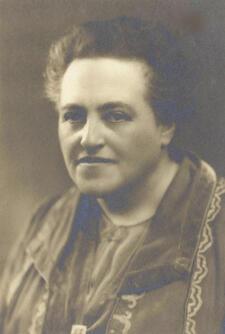
Portrait of Lily Montagu, ca. 1899. Source: National Library of Israel, Schwadron Collection, via Wikimedia Commons.
Of particular importance for girls and women were the growing numbers of clubs and settlement houses that began emerging in the 1890s. Lilian Montagu, the famed warden of the West Central Jewish Club, founded England’s first Jewish Settlement Houses in 1896. Basil Henriques, founder of the St. George’s Jewish Club (later Bernhard Baron Settlement), recruited women “because he felt that they might have a most refining influence on the lads.” Club programs, which reflected the dominant views of the day and emphasized decorum, modesty, and domesticity for girls and manliness, athleticism, and character-formation for boys, influenced educational and vocational programs. The Jewish Working Girls’ Club, also known as Lady Magnus’s and later called the Leman Street Girls’ Club, opened in 1886, ten years prior to any boys’ clubs. From the outset, clubs offered activities such as music and drama, designed to refine girls’ taste, and domestic activities such as needlework.
Through their activism, Jewish women improved communication and coordination between the Jewish community and secular agencies. Social worker Miriam Moses, for example, was active in the Labour Party, served as warden at the Butler Street Settlement and sat on the Public Health Committee. Hannah Hyam, a volunteer social worker, helped with the Children’s Country Holiday Fund. She also served as a manager at two East End schools and was a great supporter of apprenticeships. Ruth Eichholz and Henrietta Irwell were both members of the Stepney Council for Infant Welfare.
Among the many female leaders, Lilian Montagu contributed to religious life as well as to social service. Co-founder of Liberal Judaism (also known as the Jewish Religious Union), Montagu became the only female leader of a Jewish religious movement in the early twentieth century, teaching and often delivering sermons at Liberal synagogues.
Jewish women also founded a number of organizations with a consciously feminist agenda. In her pioneering work on Jewish feminist activity, Linda Kuzmack argues that Jewish women created a “distinctively Jewish” movement and participated in secular suffrage activities to a greater extent than generally acknowledged. The Jewish feminist movement, albeit small, campaigned for social reform, feminist trade unionism, suffrage, and welfare feminism. Membership in national organizations encouraged Jewish women to form similar networks of Jewish groups, both national and international.
The formation of the Union of Jewish Women (UJW), which emerged out of the 1902 Conference of Jewish Women, was an important milestone for Jewish women. Julia Cohen, whose husband Nathaniel was a leader of the JBG, presided. At the opening conference, women heard papers on rescue and prevention work related to white slavery, philanthropy, religion, girls’ clubs, and mothers’ meetings. Attended by Millicent Garrett Fawcett, leader of the National Union of Women’s Suffrage Societies (NUWSS) the conference associated itself with England’s women’s movement. Traditionally, Jewish life offered few positions of power to women, a consequence, in part, of the restrictions of religious law and their cultural implications. Ellen, Countess of Desart, a supporter of the UJW, was gratified that women’s status had improved, noting that “The Oriental proclivity among our people of assigning a secondary place to women in the scheme of life, has steadily been superseded.” The establishment and purpose of the UJW reflected a complex mix of goals and motivations and was an early attempt by women to formalize their role in philanthropic and social services.
The UJW wanted to expand educational and work opportunities, both paid and voluntary, for working- and middle-class women and emphasized that women were indispensable to a vibrant Jewish community. Representation of women on communal boards and votes for women seat holders in synagogues evolved as key priorities for the organization. Composed largely of a middle-class membership, the UJW participated in activities that were typical of their class and that were, in fact, indicators of their Britishness, and thus of their members’ level of assimilation. Until World War I, they focused on “gentlewomen,” initially leaving the work with immigrants to other Jewish philanthropic societies. As part of their campaign to enhance the status of Jewish women, the UJW became involved in girls’ education. This often amounted to improved domestic education, useful for those entering service as well as for future housewives. Beginning in 1907, the UJW worked with the Education Aid Society to screen female scholarship applicants. During the years before World War I, the UJW identified areas of demand for female workers but noted resistance in the Jewish community to these new opportunities. The UJW emphasized the large number of children growing up without any Jewish education, an important reason for Jewish women to take up philanthropic work. It supported the creation of confirmation classes and ceremonies for girls and expressed satisfaction as the practice gained popularity.
It was not until 1919 that the UJW became the first women’s organization invited to send representatives to the Jewish Board of Deputies. The same year, the Gentleman’s Committee of the JAPGAW welcomed Hannah Hyam and Ida Samuel to their ranks; they acknowledged their experience and devotion to “social improvements” and recognized the contributions the women would make. Throughout the inter-war years, the UJW continued its efforts to attain greater equality for women and to increase their power in Jewish communal affairs. After her 1924 re-election as president of the UJW, Ruth Eichholz reflected on the general improvements that women had achieved. However, she regretted that the position of Jewish women remained unsatisfactory and expressed frustration that vehement opposition to the female franchise remained within the United Synagogue.
Several non-religious movements also took root, among them Zionism and the labor movement. Zionism did not gain much popularity in its early days and remained a fringe movement within Anglo-Jewry. However, British women played central roles in the international Zionist movement.
In 1918 women members of the Zionist Organization of England set up their own organization, the Federation of Women Zionists (FWZ). The founders elected Rebecca Sieff as their president and opened an office in London in February 1919. They formed committees for disseminating their ideas, for collecting clothing to send to orphans in Palestine, and for co-operation with the London branch of the Verband jüdischer Frauen für Kulturarbeit in Palästina (The Jewish Women’s League for Cultural Work in Palestine). In fact, they emphasized cultural work rather than fundraising. In 1943, the FWZ participated in a deputation to the House of Commons, to protest against Britain’s Palestinian policy.
It is clear from the proceedings of FWZ’s first conference that the founders aimed at establishing an international organization that would involve women beyond Britain. Yet when, in November 1919, after an extensive tour of Palestine, Rebecca Sieff proposed the foundation of precisely such an organization, there was some opposition to the proposal. Nevertheless, in July 1920, when an international body, the Women’s International Zionist Organization (WIZO) was established, with Rebecca Sieff as its president, FWZ became a branch of it. While WIZO focused on world affairs, FWZ dealt with local activity, but the division of labor was not altogether amicable.
Major changes in women’s status occurred during the twentieth century, both in the larger society and in the Jewish community. Jewish women, like their brothers, received university educations and entered the professions in large numbers. At the end of the twentieth century, fully half of all employed Jewish women were in the professions.
Jewish women participated in virtually every form of cultural and political activity. Anita Brookner, Eva Figes (b. 1932), Karen Gershon, and Muriel Spark achieved fame as novelists, though they did not necessarily address Jewish subjects in their work and Spark converted. Early in the century Rachel Sassoon Beer was owner and editor of the Sunday Times. In the world of theater and film Elizabeth Bergner, Janet Suzman (b. 1939), and Claire Bloom have been notable figures. Ballerina Alicia Markova achieved international fame, as did pianist Dame Myra Hess and violinist Ida Haendel. Jewish women have played an active role in politics, serving as MPs in the Labour party (e.g. Renée Short, b. 1919) and in the Conservative Party (e.g. Sally Oppenheim, b. 1930) and as life peers. Dame Rose Heilborn (b. 1914) was a Justice of the High Court of Great Britain.
Some Jewish women chose unusual careers for women. Hertha (Marks) Ayrton was among the first females to study at Cambridge University, becoming a physicist. Rosalind Franklin was a physical chemist whose crucial experimental data enabled James Watson and Francis Crick to solve the structure of DNA. Miriam Rothschild devoted her life to biology and zoology. Lily Delissa Solomon (1863–1940) was a pioneer cyclist, motorist, and airplane pilot, while Sheila Van Damm (b. 1922) was European women’s driving champion in 1954–55. More conventionally, Alexandra Buxton (b. 1934) was a tennis champion.
Jewish women have made strides in the religious life of the community. While United Synagogue still bars women from serving as synagogue chairs and Orthodox synagogues continue to prohibit women from voting in their own right, women have found arenas for their talents in provincial synagogues outside United Synagogue. Recently, Judge Myrella Cohen led a group endeavoring to improve the plight of the Woman who cannot remarry, either because her husband cannot or will not give her a divorce (get) or because, in his absence, it is unknown whether he is still alive.agunah. Many of these changes have their roots in Hannah Cohen’s 1930 presidency of the JBG. In 1967, Leo Baeck College agreed in principle that women could enter the Rabbinical College; ordination of the first woman rabbi, Jacqueline Tabick, took place in 1975. More recently, prayer books have incorporated gender-neutral language, new rituals celebrate women’s life cycle events, and Rabbi Sheila Shulman founded the first synagogue for gays and lesbians. Jo Wagerman became both the first female Head Teacher of JFS (1985–1993) and the first woman president of the JBD in 2000. In 1992, Chief Rabbi Jonathan Sacks set up a commission that included numerous distinguished women, which produced a report with recommendations to enhance women’s status. In March 2001, United Synagogue changed its 130-year-old rules, enabling women to become honorary officers of synagogues. Thus, despite the obstacles that still remain, British Jewish women have attained key roles in and out of the Jewish community, taking advantage of new opportunities in religious and secular society alike.
Board of Guardians for the Relief of the Jewish Poor. Annual Reports. 1880–1939.
Jewish Association for the Protection of Girls and Women. Annual Report. 1925–1932, 1935–1936.
Union of Jewish Women. Annual Report. 1903–1938.
Black, Gerald David., LL.B. “Health and Medical Care of the Jewish Poor in the East End of London: 1880–1939.” Ph.D. thesis, University of Leicester, 1987.
Bristow, Edward. Prostitution and Prejudice: The Jewish Fight against White Slavery, 1870–1939. New York: 1983.
Burman, Rickie. “The Jewish Woman as Breadwinner: The Changing Value of Women’s Work in a Manchester Immigrant Community.” Oral History 10 (1982): 27–39.
Burman, Rickie. “Jewish Women and the Household Economy in Manchester, c. 1880–1920.” In The Making of Modern Anglo-Jewry, edited by D. Cesarani, 55–75. Oxford: 1990.
Burman, Rickie. “‘She Looketh Well to the Ways of Her Household’: The Changing Role of Jewish Women in Religious Life, c. 1880–1939.” In Religion in the Lives of English Women, 1760–1930, edited by G. Malmgreen, 234–259. Indiana: 1986.
Cheyette, Brian. Constructions of “the Jew” in English Literature: Racial Representations, 1875–1945. Cambridge: 1993.
Endelman, Todd M. The Jews of Georgian England, 1714–1830: Tradition and Change in a Liberal Society. Philadelphia: 1979.
Endelman, Todd M. The Jews of Britain, 1656 to 2000. Berkeley and Los Angeles: 2002.
Endelman, Todd. Radical Assimilation in English Jewish History, 1656–1945. Bloomington, Indiana: 1990.
Feldman, David. Englishmen and Jew: Social Relations and Political Culture, 1840–1914. New Haven: 1994.
Galchinsky, Michael. The Origin of the Modern Jewish Woman Writer: Romance and Reform in Victorian England. Detroit: 1996.
Gartner, Lloyd. The Jewish Immigrant in England, 1870–1914. London: 1960;
Kuzmack, Linda Gordon. Woman’s Cause: The Jewish Woman’s Movement in England and the United States, 1881–1933. Columbus: 1990;
Marks, Lara. “‘Dear Old Mother Levy’s’: The Jewish Maternity Home and Sick Room Helps Society, 1895–1939.” The Journal of Social History of Medicine 3 (1990): 61–88.
Idem. “The Experience of Jewish Prostitutes and Jewish Women in the East End of London at the Turn of the Century.” The Jewish Quarterly 34 (1987): 6–10.
Idem. Model Mothers: Jewish Mothers and Maternity Provision in East London, 1870–1939. Oxford: 1994.
Montagu, Lily. My Club and I: The Story of the West Central Girls’ Club. 2nd ed. London: 1954.
Umansky, Ellen. Lily Montagu and the Advancement of Liberal Judaism: From Vision to Vocation. New York: 1983.
White, Jerry. Rothschild Buildings: Life in an East End Tenement Block. 1887–1920. London: 1980.

